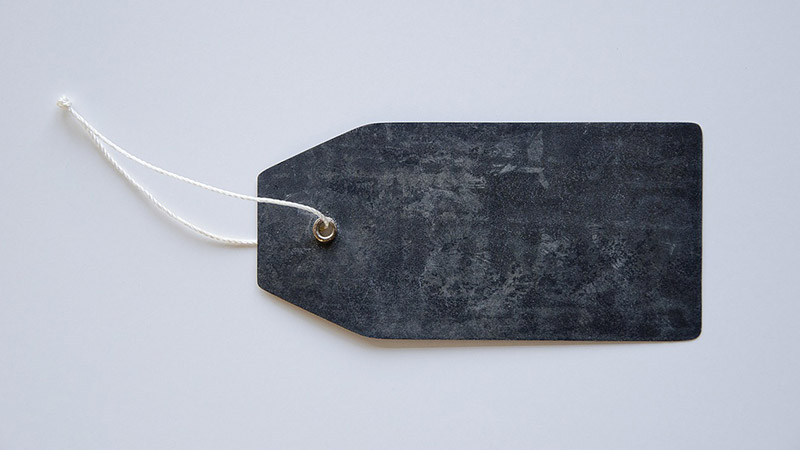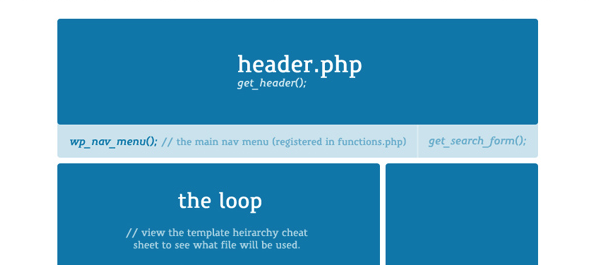The Ultimate WordPress Cheatsheet

WordPress is quickly becoming a household name if it isn’t already. It’s everywhere, this benign beauty, powering some of the best websites and web apps the world has ever seen. It’s a premiere CMS and blogging platform that’s not only incredibly versatile, but also amazingly easy to learn and use. Why else would WordPress grow in popularity each passing day?
But what you see on the surface when you set up and launch WordPress is just a small fraction of what goes on behind the scenes. In fact, the beautiful UI we all so love is nothing compared to the bedlam of activity backstage. What I mean is, WordPress runs on two somewhat complicated web technologies known as PHP and MySQL.
Other technologies that play a part include JavaScript, it’s close cousin jQuery, CSS and HTML. WordPress themes (and even plugins) are mainly written in PHP, and rely on MySQL databases to run. They also depend on the aforementioned web technologies. All these technologies must work together.
Now as a beginner, you might not understand that in order for the WordPress platform, themes and plugins to work in unison, developers use a set of standardized codes, otherwise collectively known as PHP tags. It’s these codes we are outlining in today’s post, showing you how they’re useful. We will squeeze in a few examples somewhere in here for good measure, so get ready to have a blast on your theme building journey!
Theme Anatomy
A WordPress theme is simply nothing more than just several PHP files linked together. It comes with a CSS stylesheet file that’s responsible for how your theme (and site) looks. Back to the basics though, a WordPress theme is merely a couple of PHP files. Above is a snapshot of a great tuts+ cheatsheet for the anatomy of a WordPress theme. To create a WordPress theme, you’ll need the following files:
- header.php– This template file contains the header information, that appears within the <head> section, and before the opening <body> tag. Here you add metadata, site title, and link to your CSS stylesheet among others.
- index.php – This is the main body template for your WordPress theme (or site). Its sole purpose is to put together the other files by including them using template tags (more about template tags in a moment).
- sidebar.php – This is your sidebar section. You can place widgets, categories, extra menus, search form and anything else you fancy
- footer.php – This is the footer section. Add your copyright info, RSS links, widgets, links, social icons etc
- page.php – Whenever you create a page on your WordPress-based site, this is the template responsible
- single.php – This template files carries a single blog post
- comments.php – The template responsible for them comments
- 404.php – The template shown when your reader encounters the infamous 404 not found error
- search.php – Offers your readers the chance to find content on your WordPress site
- searchform.php – You will need a search form to offer the above mentioned functionality, now won’t you?
- archive.php – Because finding content you published in 2008 shoudn’t be a hassle
- functions.php – Place all special functions, and even custom plugins here. For cross-theme compatibility however, you’re advised to add custom code as standalone plugins. You can add extra menus, activate widgets and so much more. This file gives you so much power to turn your WordPress site/theme whichever way you want.
- style.css – This is not a PHP template file as such. But it is the file where you add your CSS styles to control the aesthetics. It also comes with the information header for your WordPress theme.
Without a doubt, you can build a theme with fewer templates, but we wouldn’t recommend making a habit out of it. After all, you just need the above 10 or so files to create a standard WP theme. Thirteen isn’t a big figure, now is it? In a nutshell, your index.php might look something like:
<?php
// Every page will need the contents of the header.php
get_header(); ?>
// Insert main content here, include the loop
<?php
// Include your sidebar
get_sidebar(); ?>
<?php
// The footer hook is used by themes and plugins to load scripts and tracking codes
get_footer(); ?>Moving along, let’s talk about a nifty code snippet called the loop.
The Loop
In some of our previous post series, such as the popular WordPress Tutorial: How to Create a WordPress Theme from HTML, we’ve mentioned the loop, albeit in passing. So what makes the loop the popular snippet it is? Well, without this special piece of code, you would have to hand-code each post, along with the excerpts, into your WordPress theme. You’d do this every time you posted a new article.
The effort and time you’d waste would turn you blue and stiff. The carbon imprint you’d leave behind – after working your sorry self to death – would tear a hole the size of twelve Yankee stadiums thro’ the ozone layer. Well, I’m over-stretching the facts (or lack thereof) but you’d go bonkers were you to code each and every post into your WordPress site manually.
The loop is a life saver. Just throw the following code snippet wherever in your WordPress template files, and it’ll list all posts you’ve ever created:
<?php
if ( have_posts() ) :
while ( have_posts() ) :
the_post();
// Post Content here
endwhile;
endif; ?>We usually use the loop in index.php to display a list of posts but feel free to experiment; add it wherever you want to list your posts. Moreover, add custom HTML and PHP tags within the loop to customize your posts as you deem fit. Speaking of tags, what’s available in WordPress?
Include Tags

Template include tags are simply PHP codes you use in any template file to include (or rather call) other template files from your WordPress theme folder. Here’s what we are talking about:
- <?php get_header(); ?> – Use this in index.php to call (or include) the header.php file. It will fetch header.php and display its content in index.php – that’s what including a file is all about.
- <?php get_sidebar(); ?> – Includes sidebar.php
- <?php get_footer(); ?> – Includes the footer.php template file
- <?php comments_template(); ?> – Quick Quiz: What do you think this include tag does?
Template Bloginfo Tags
There’s another category of templates tags that we’ll simply call bloginfo tags. They play one role, which is to fetch information about your WordPress site from the database. This is mainly the information you feed to your WordPress site in your admin area via the User Profile and Settings -> General. Once the information is retrieved from your databases, these tags will then display the same on your site as you place them.
You can slightly modify the structure of bloginfo, so that instead of just displaying the information retrieved, you can use it (the info) elsewhere in your PHP code. How convenient? More about that in a moment. Here are the most common bloginfo tags:
- <?php bloginfo(‘name’); ?> – This displays the title of your WordPress blog/site
- <?php bloginfo(‘url’); ?> – This template tag displays the URL of your blog
- <?php bloginfo(‘description’); ?> – This displays the description, or rather the tagline, of your blog.
- <?php bloginfo(‘charset’); ?> – Displays the character set used to encode your site. Default is UTF-8
- <?php bloginfo(‘stylesheet_url’); ?> – This shows URL to the CSS stylesheet of your active theme
- <?php bloginfo(‘version’); ?> – Displays the WordPress version you’re using
- <?php bloginfo(‘language’); ?> – Displays the language of WordPress
- <?php bloginfo(‘rss_url’); ?> – Displays URL for the RSS 0.92 feed
- <?php bloginfo(‘rss2_url’); ?> – Displays URL for the RSS 2.0 feed
There are several other bloginfo tags you can use to enhance your WordPress theme. Now about that little bloginfo modification we talked about a couple of seconds ago. So far, we’ve been using <?php bloginfo(); ?>. Let’s modify this to: <?php $bloginfo = get_bloginfo ($show, $filter); ?>. Allow me to break down the parameters:
- $show – This is the keyword you use to name the information you want to retrieve from the database. Examples include ‘name’, ‘url’, ‘description’, ‘admin_email’ etc
- $filter – This just allows you to filter the information retrieved. By default, it’s set to ‘raw’, which just means the value of $show is returned as is. Setting this to ‘display’ will cause the value of $show to be passed through the wptexturize() function first. Don’t sweat about this at the moment though.
Here’s an example: Let’s assume we want to fetch and display your tagline (site description) that goes like “Best Premium WordPress Themes,” we would first retrieve this information using this tag…
<?php $site_description = get_bloginfo( 'description' ); ?>…which loads the site description to $site_description. To display your site description on your site, use this:
<?php echo 'Your tagline is: '. esc_html( $site_description ); ?>This gives you: Your tagline is: Best Premium WordPress Themes
Note: There are many other types of template tags that allow you to achieve so much more with your WordPress site. They’re classified into various sets namely general tags, author tags, post thumbnail tags, category tags, and link tags among others. You can even use them inside the loop, so yeah, you ought to have fun.
Theme Stylesheet
We mentioned style.css earlier. Again, why is style.css file important? Firstly, it provides details about your theme. This information goes into the stylesheet header, which helps in identifying the theme during selection in the admin area. As such, no two themes should have the same details in their stylesheet headers. Here’s an example of a stylesheet header:
/*
Theme Name: Your Theme Name
Theme URI: https://www.yoursite.com/yourtheme
Author: Your Name
Author URI: https://www.yoursite.com/
Description: This WordPress theme is 100% responsive blah blah...
Version: 1.0
License: GNU General Public License V2 or later
License URI: http://www.gnu.org/licenses/gpl-2.0.html
Tags: gold, one-column, left-sidebar, responsive-grid, etc
Text Domain: yourthemename
*/This information comes first (or at the very top) in style.css. Other than that, ensure that you:
- Follow CSS Coding Standards
- Use valid CSS
- Minimize CSS
- Add print-friendly styles
- Style all HTML elements
Final Thoughts
This cheat sheet is just a quick go-to resource that will help you get started as you learn WordPress theme development. Using the tags, and snippets we’ve shared here, you can quickly develop a standard theme, and enhance it without breaking a sweat. Of course, you need to keep learning WordPress theme development, and for that we recommend the WordPress Codex, tuts+, Threehouse, and ThemeShaper among other reputable resources.
Other than that, please feel free to share your tips, cheats, snippets or anything else you have in mind in the comments below. We’d love to find out where or how you learn about WordPress. See you around!




Nice. Great cheat sheet for beginners and a good reminder for others.
Thanks a lots. I am going to learn about WordPress theme and this guide me.
Really great – thanks so much!
I simply must tell you that you have written a great and unique article
that I really enjoyed reading. I’m fascinated by how well
you presented your material and shown your views.
Thanks.
Thanks a lot for shearing this blog comment post.Thanks about this post and i like this post.